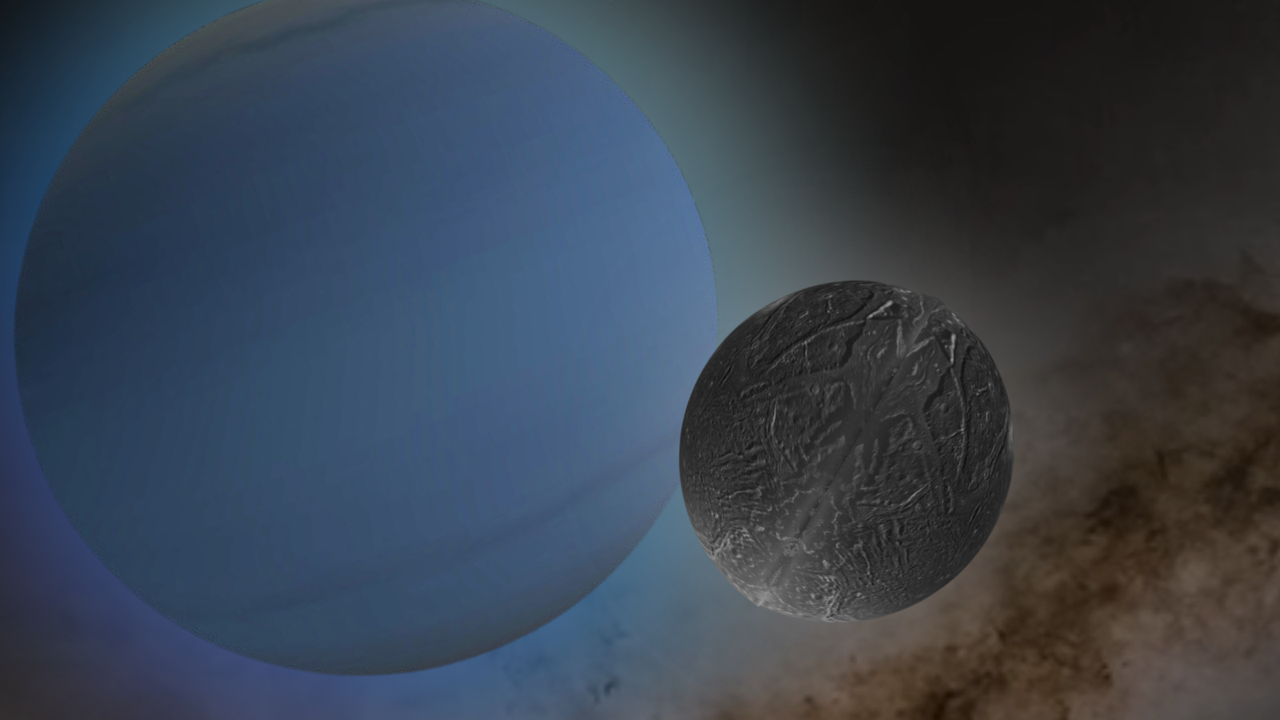New research indicates that Ariel, one of Uranus’ moons, may have concealed a vast ocean beneath its icy crust, potentially over 100 miles (170 kilometers) deep. This discovery adds to the mounting evidence that Uranus’ moons could have been ocean worlds in their distant past.
Ariel, measuring approximately 720 miles (1,159 kilometers) in diameter, is smaller than many of the moons orbiting Jupiter and Saturn. Despite its size, Ariel boasts a strikingly bright surface with complex geological features. This includes ancient cratered regions mixed with younger, smoother plains likely formed by cryovolcanism, a process involving icy volcanism on celestial bodies. According to Alex Patthoff, a senior scientist at the Planetary Science Institute in Arizona and co-author of the study, “Ariel is pretty unique in terms of icy moons.”
The research team, led by Caleb Strom from the University of North Dakota, aimed to explore Ariel’s past interior structure and orbital eccentricity—how much its orbit deviated from a perfect circle. To achieve this, they modeled the effects of Uranus’ gravity on Ariel over time, examining how it would have stretched and compressed the moon, resulting in fractures and reshaping of the icy crust.
The analysis revealed that Ariel’s orbital eccentricity was once approximately 0.04, which is about 40 times greater than its current state. This would mean that its orbit was four times more eccentric than that of Europa, Jupiter’s icy moon known for its geologically active surface. The researchers concluded that the extensive cracks and ridges on Ariel’s surface could only be explained if the crust flexed over a liquid layer beneath it.
Patthoff stated, “But either way, we need an ocean to be able to create the fractures that we are seeing on Ariel’s surface.” This research builds on a previous study from 2024, which indicated a subsurface ocean on Miranda, another moon of Uranus. The results suggest that several of Uranus’ moons may have once harbored oceans.
The potential existence of subsurface oceans is significant in planetary science due to their implications for hosting life. Liquid water is essential for biological processes, and hidden oceans beneath ice could be kept warm through tidal heating or radioactive decay, enabling the possibility of life even in the distant reaches of the solar system.
While the study does not determine when Ariel’s ocean formed, how long it persisted, or if it still exists, it provides valuable insights into the evolution of such oceans in the outer solar system. The findings also reinforce calls for a dedicated mission to Uranus. The proposed Uranus Orbiter and Probe, identified by the National Academies’ planetary science decadal survey as NASA’s highest-priority flagship mission for 2023–2032, would spend at least five years orbiting the planet. It aims to deploy an atmospheric probe and explore Uranus’ rings and moons in detail.
Although funding has not yet been allocated by Congress, scientists argue that such a mission could address critical questions regarding Uranus’ extreme axial tilt, its dense ring system, and its moons that may contain oceans. As Kathleen Mandt, a planetary scientist at The Johns Hopkins University Applied Physics Laboratory, noted, a dedicated mission could be transformative, similar to the way NASA’s Cassini mission reshaped our understanding of Saturn.
Currently, spacecraft have only captured images of the southern hemispheres of Ariel and Miranda. The models developed by the research team may help predict what a future mission could uncover in the unexplored northern regions, which may include additional fractures and resurfaced terrain.
In conclusion, as Tom Nordheim, co-author of the study and principal investigator of the NASA grant supporting the research, remarked, “Ultimately, we just need to go back to the Uranus system and see for ourselves.” The study is set to be published in the January 2026 edition of the journal Icarus.





































































